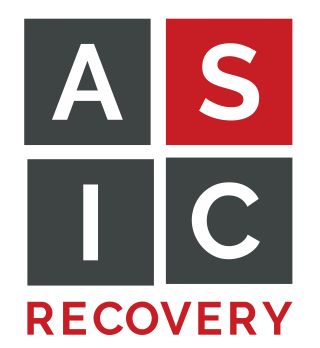Cognitive Behavioral Therapy, or CBT, is a psychological treatment method that helps you change the patterns of thinking or behavior that are either directly causing you problems, making problems worse, or keeping you from getting better.
It’s used to treat a wide range of issues, from sleeping difficulties or relationship problems to drug and alcohol abuse or anxiety and depression.
For mental health issues that have a biological component and are the result of chemical imbalances in the brain, CBT is often only one part of a comprehensive solution that may involve medications or other treatment methods.
CBT tries to change your attitudes and behaviors by focusing on the thoughts, images, beliefs, and attitudes that you hold (your cognitive processes). The goal is to remove negative behaviors and thought patterns and replace them with healthy ones.
How Does Cognitive Behavioral Therapy Work?
CBT works by helping you to identify and challenge negative, dangerous, damaging, and destructive thoughts and behaviors. The idea is that if you can change the way you think about things, you can also change how you feel and behave.
For example, if you’re feeling anxious about a social event, you might have thoughts like “Nobody will talk to me,” or “I’ll make a fool of myself.” These thoughts can lead you to avoid social events entirely.
After repeatedly avoiding social situations for a long period of time, you might have fewer and fewer relationships and end up stuck at home all the time. This in turn can lead to loneliness, which can turn into depression.
The depression then ensures that you continue to stay isolated and withdrawn. You might even turn to alcohol and drugs to cope, making things even worse and eventually leading you to some form of expensive treatment (or even jail or health problems)
All of this is because of the original negative thought patterns that no one would talk to you or you’d make a fool of yourself.
In CBT, a therapist would help you to challenge these thoughts and develop more helpful ones, like “I can handle this,” or “People usually enjoy talking to me.” By addressing the root of the problem, it keeps helps you to engage in positive behaviors that make you feel better about yourself.
This will take a while, and you will struggle with it — after all, these patterns are deeply rooted and have been reinforced by decades of habit. They’re not going to go away overnight, but given enough time, they can improve.
That’s not to say that going to a social event is going to cure your anxiety or depression. Instead, it’s about trying to short-circuit the things that your experience has shown you often lead you into a downward spiral.
Key Principles of Cognitive Behavioral Therapy
The key principles of CBT include the belief that psychological problems are based, in part, on faulty or unhelpful ways of thinking and learned patterns of unhelpful behavior. CBT helps you identify these unhelpful thoughts and behaviors and replace them with more adaptive ones.
Because there are so many different types of negative thought patterns, and because most people have more than one, it’s critical that you work with a trained, experienced therapist to develop a treatment plan unique to you.
This is the reason for another CBT principle — CBT should always take a collaborative, goal-oriented approach.
You and your therapist should work together to identify your goals and the steps you need to take to reach them. The process is active and requires your participation. It’s not about the therapist telling you what to do but about working together to find solutions.
Techniques Used in Cognitive Behavioral Therapy
Think of Cognitive Behavioral Therapy as a toolbox. Your therapist has many different tools they can use to help you confront and cope with your issues.
Techniques include cognitive restructuring, where your therapist helps you challenge your negative thoughts and beliefs and replace them with more positive and realistic ones.
Another technique is exposure therapy, which is where you’re gradually exposed to situations that you fear or avoid, helping you to reduce your anxiety and avoidance behaviors over time.
Behavioral activation is another technique that encourages you to engage in activities you enjoy or find rewarding to help improve your mood and reduce negative thoughts and behaviors.
All of these techniques are broad categories with many specific methods targeted to help with specific behaviors and thought patterns.
Each therapist will have their own unique take on how these methods and others should be implemented. It’s up to you to work with your therapist to find the methods that work best for you.
Exercises Commonly Used in Cognitive Behavioral Therapy
CBT exercises are practical activities that you can do, either during your therapy sessions or on your own, to reinforce the principles and techniques you’re learning.
These might include keeping a thought diary, where you write down your thoughts and feelings each day and then look for patterns or triggers.
Another common exercise is to engage in behavioral experiments, where you test out your thoughts and beliefs to see if they hold up in reality.
For example, if you believe that people don’t like you, you might experiment by initiating a conversation with someone and seeing how they respond.
You and your therapist will come up with the exact exercises that will be most effective in your treatment.
Benefits and Effectiveness of Cognitive Behavioral Therapy
Research has shown that CBT can be incredibly effective in treating a wide range of mental health disorders. It can help reduce symptoms of depression, anxiety disorders, post-traumatic stress disorder (PTSD), and many other conditions.
One of the biggest benefits of CBT is that it can be long-lasting. Because it teaches you new ways of thinking and behaving, you can continue to use and benefit from these techniques, even after your therapy sessions have ended.
How to Find a Cognitive Behavioral Therapist
Finding a cognitive behavioral therapist involves doing some research and asking the right questions. Start by seeking referrals from your primary care physician, friends, or family members, and make sure they take your insurance.
Professional organizations, such as the Association for Behavioral and Cognitive Therapies, also provide directories of therapists who specialize in CBT. However, CBT has become such a common practice that most therapists today know how to implement it.
When choosing a therapist, consider their qualifications, experience, and approach to therapy. It’s also important to find someone you feel comfortable with and trust as the relationship between patient and therapist is crucial to the success of therapy.
The Impact of Cognitive Behavioral Therapy on Mental Health
Cognitive Behavioral Therapy is a powerful tool in the field of mental health. It’s been proven to be effective in treating a wide range of disorders and can provide long-lasting benefits.
Understanding what Cognitive Behavioral Therapy is and how it works is the first step in making use of this valuable approach to mental health care.
If you are struggling, don’t hesitate to seek help. The journey might be tough, but with the right support and therapy, like CBT, it’s possible to recover and live a happy, fulfilling life.
IOP at ASIC Recovery
Are you looking for substance abuse treatment in Texas?
At ASIC Recovery, our Intensive Outpatient Program (IOP) is dedicated to helping individuals develop healthier coping skills and build a recovery supportive network in all aspects.
Click to learn more.



